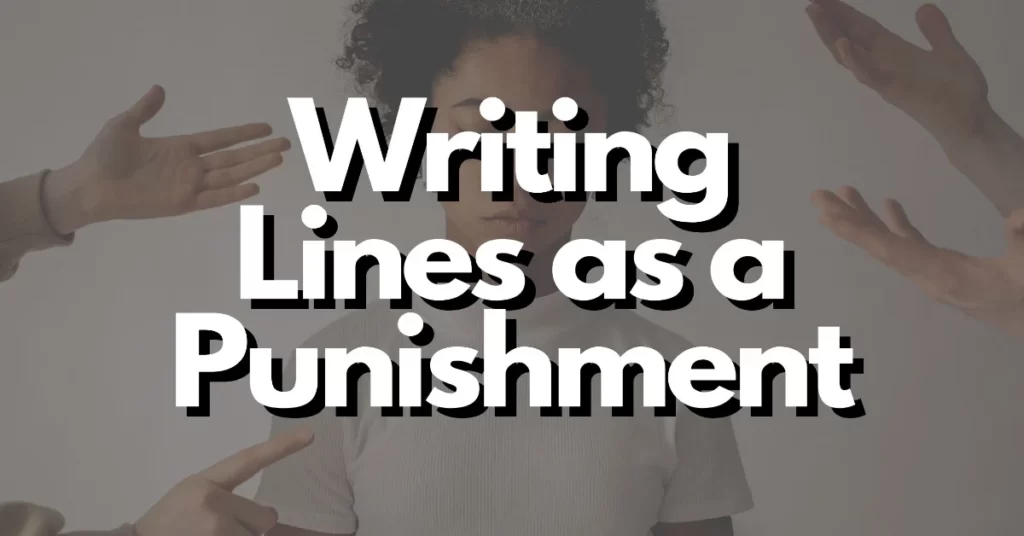Writing lines as a punishment has long been a traditional form of discipline in schools and other institutions. It involves repeatedly writing a sentence or phrase as a way to reinforce the consequences of misbehavior or to encourage good behavior.
However, the effectiveness of this method has been debated for years, with some arguing that it is an outdated and ineffective form of punishment. In this article, we will explore the question, “does writing lines as punishment work?”
We will examine the potential benefits and drawbacks of this method and provide some insights into its effectiveness based on current research. Whether you’re a teacher, parent, or simply interested in the topic, this article will provide valuable information on this widely-used disciplinary method.
The history of writing lines as punishment
The history of writing lines as punishment can be traced back to traditional educational practices where teachers used it as a disciplinary measure. It was believed that repetitive writing of sentences or phrases would instill discipline and deter misbehavior. This approach was commonly employed in schools to enforce rules and reinforce consequences for students.
The psychological effects of writing lines as punishment
The psychological effects of writing lines as punishment can vary among individuals. While some students may find it effective in promoting self-discipline and reflection, others may experience negative emotions such as frustration, boredom, or resentment.
The monotonous nature of writing lines may not address the underlying causes of misbehavior and can potentially hinder intrinsic motivation and creativity.
The potential benefits and drawbacks of using writing lines as punishment
When considering the potential benefits and drawbacks of using writing lines as punishment, it is important to weigh the intended outcomes against the potential negative impact on students’ well-being. On one hand, writing lines can serve as a tangible consequence, providing a clear link between actions and repercussions.
It may also help students develop responsibility and accountability for their behavior. However, it may not always foster a deeper understanding of the underlying issues and may not be effective for all students.
Alternatives to writing lines as punishment
There are alternatives to writing lines as punishment that can be more constructive and promote positive behavior. Restorative practices, such as dialogue circles or mediation, focus on understanding the reasons behind the misbehavior and fostering empathy and personal growth.
Positive reinforcement strategies, such as rewards and recognition, can motivate students to exhibit desired behavior. Open communication and establishing clear expectations can also contribute to a respectful and supportive learning environment.
Tips for using writing lines as punishment effectively
If writing lines as a form of punishment is used, there are tips to consider for its effective implementation. First, ensure that the assigned sentences or phrases are relevant to the student’s behavior and provide an opportunity for reflection. Setting realistic goals and expectations for completing the task can prevent overwhelming students.
It is important to monitor students’ progress and offer guidance or support when needed. Lastly, creating a supportive and non-judgmental environment where students feel comfortable discussing their thoughts and experiences can help maximize the potential benefits of writing lines as a disciplinary measure.
Conclusion
In conclusion, the effectiveness of writing lines as a form of punishment is a complex issue that requires careful consideration. While it may provide a quick and easy way to address misbehavior, it is not without its potential drawbacks. Current research suggests that the use of writing lines as a punishment should be done with caution, and in conjunction with other disciplinary methods.
Teachers and parents should consider alternative forms of discipline that promote positive behavior, such as positive reinforcement or restorative justice. In the end, the goal of discipline should not simply be to punish bad behavior, but to create a safe and positive learning environment that fosters growth and development.

